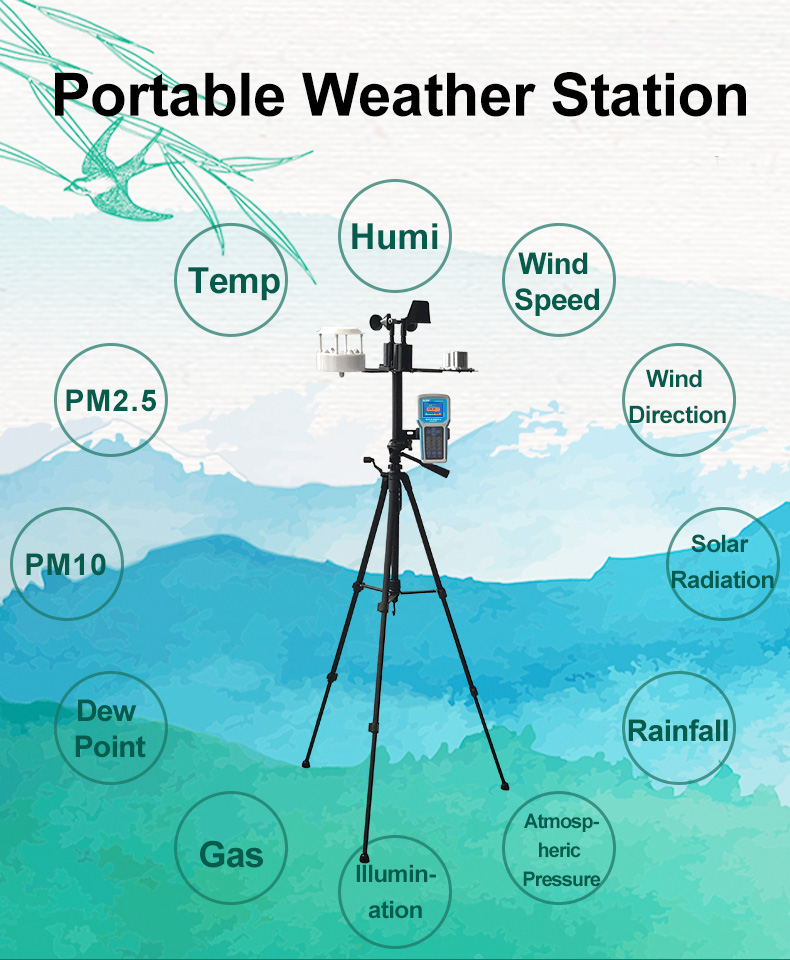wireless weather station

I believe that many people are familiar with wireless weather station. The main function of wireless weather station is to monitor the information of various radiation elements. Through the monitoring of environmental element information, it can provide reference data support for planting. For weather Monitoring station, let’s introduce it in detail.
Composition of wireless weather station
The weather monitoring station is composed of sensors, weather station brackets, solar panels and batteries, collectors and transmission modules, and background computer terminals.
Sensor part: The main function of the sensor part is to monitor various meteorological elements. There are many kinds of sensors, which can provide reference data support for planting according to the needs of users.

Weather station bracket part: The main function of the weather station bracket is to place sensors, electric boards, collectors and transmission modules.
Solar panels and batteries: The main function of solar panels and batteries is to provide power support.
Collector and transmission module: the main function of the collector and transmission module is to collect the meteorological elements monitored by the sensor, and after collection, the collector will transmit the meteorological elements to the background computer.
Background computer part: the main function of the background computer part is to display meteorological element information.
What are the advantages of wireless weather stations?
1. High accuracy
The radiation instruments in the observation system use the instruments of the International Organization for Standardization (ISO) and WMO that meet the specification requirements of various pyranometers as instruments for daily business work, and the radiation equipment supporting devices of the photovoltaic weather station adopt the latest technology. Install forced ventilation equipment to minimize uncertain factors such as thermal offset that may be caused by it. The supporting use of these excellent instruments can ensure the accuracy of its data and is trustworthy.
2. Strong reliability
The photovoltaic weather station adopts excellent electromagnetic compatibility design and strict environmental adaptability design so that the reliability of its measurement data can be guaranteed even in harsh environments. In addition, photovoltaic weather stations strictly follow the highest standards achievable in my country in terms of measurement, calibration and accuracy, and will provide the most modern continuous, long-term and frequent sampling measurements of surface radiation flux. Therefore, the photovoltaic weather station has a good reputation, is stable and reliable, and is trustworthy.
3. Flexibility
The hardware adopts a building block design, and the observation elements can be flexibly configured according to the needs of the observation points. All automatic weather stations are scalable to meet the potential needs of adding other observation elements in the future. The software is designed in accordance with the requirements of meteorological standards for future business system development planning, and strengthens the expansion capability and compatibility of the system, which can meet the tasks and needs of customers for ground observation.